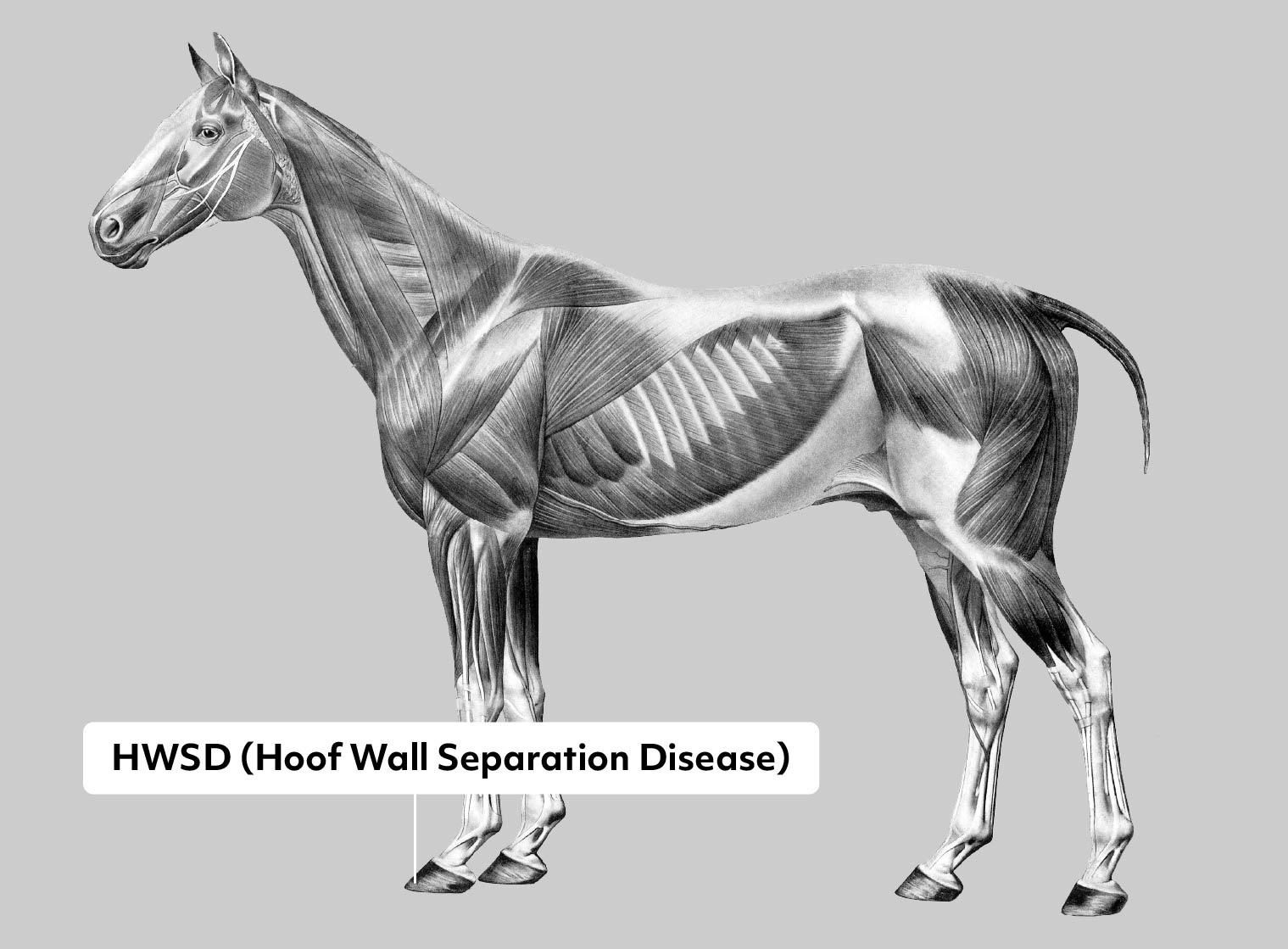Hoof Wall Separation Disease (HWSD)
Gene or Region: SERPINB11
Reference Variant: -
Mutant Variant: C
Affected Breeds: Connemara
Research Confidence: High Confidence - Strong association and functional data in studied population
Explanation of Results: hwsd/hwsd = homozygous for Hoof Wall Separation Disease, trait expressed hwsd/n = heterozygous for Hoof Wall Separation Disease, carrier n/n = no variant detected
Hoof Wall Separation Disease: Genetic Causes, Diagnosis, and Treatment in Horses
Hoof Wall Separation Disease is characterized by separation and breakage of the dorsal hoof wall extending up from the sole. Affected ponies begin showing symptoms at less than 6 months of age, and often develop chronic laminitis. Frequent hoof trimming and glue on shoes can help manage the condition. Hoof wall separation disease is an autosomal recessive disorder, thus a pony must inherit two copies (HWSD/HWSD) to show symptoms. Ponies with only one allele (HWSD/n) are known as carriers due to their ability to produce affected offspring.
Gene Information
SERPINB11 is a serine protease inhibitor of unknown function. In normal horses, it is highly expressed in the corony band. However, the insertion associated with HWSD results in a premature stop codon, resulting in an incomplete protein and greatly decreased expression.
References
Finno CJ et al., “SERPINB11 frameshift variant associated with novel hoof specific phenotype in Connemara ponies.” (2015) PLoS Genet. 11: e1005122. PMID: 25875171
More Horse Health
Equine Herpes Virus Type 1 & Induced Myeloencephalopathy
Equine herpesviruses are DNA viruses that are found in most horses all over the world, often without any serious side effects. Following infection of Equine Herpesvirus Type 1 (EHV-1) some horses then suffer Equine Herpesvirus Myeloencephalopathy (EHM), which is is accompanied by serious and sometimes fatal neurological effects. EHM in horses can have serious neurological symptoms on affected horses.
Equine Metabolic Syndrome / Laminitis Risk
Equine Metabolic Syndrome (EMS) is a wide-spread issue in the horse population. Primarily characterized by hyperinsulinemia (excess insulin circulating in the blood in relation to glucose levels), this metabolic disorder is often present in obese horses and ponies and can be challenging to diagnose as it can be misdiagnosed as "Cushing's" (a pituitary disfunction).
Equine Recurrent Uveitis Risk and Severity
Equine Recurrent Uveitis (ERU) is the most common cause of blindness in horses, affecting about 3-15% of the horse population worldwide. Characterized by episodes of inflammation of the middle layer of the eye, Equine Recurrent Uveitis in horses leads to the development of cataracts, glaucoma and eventually complete loss of vision.
